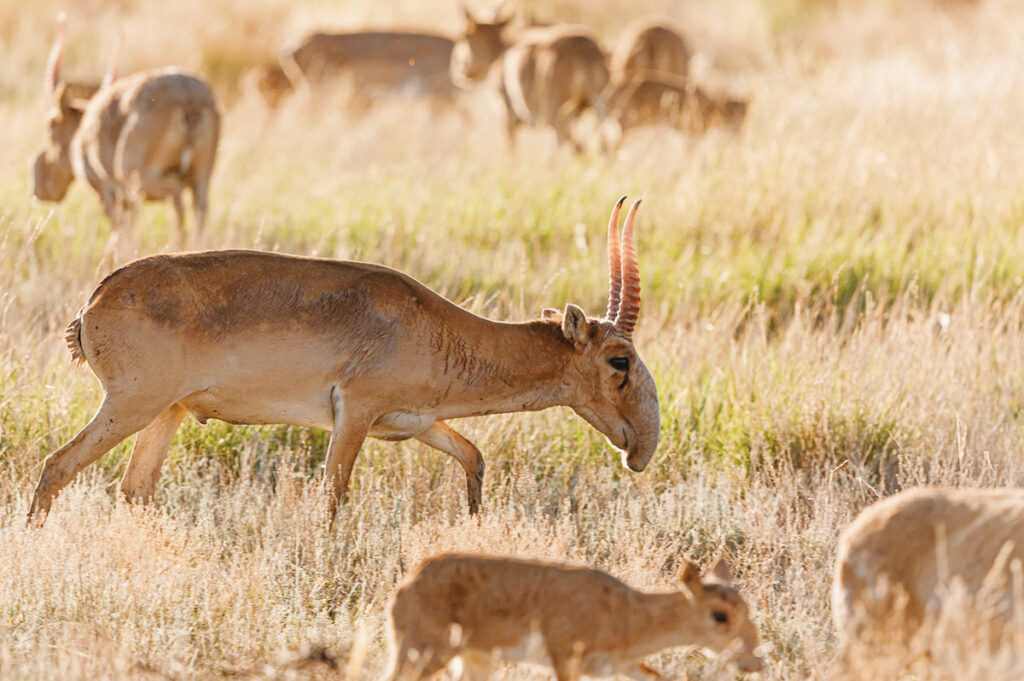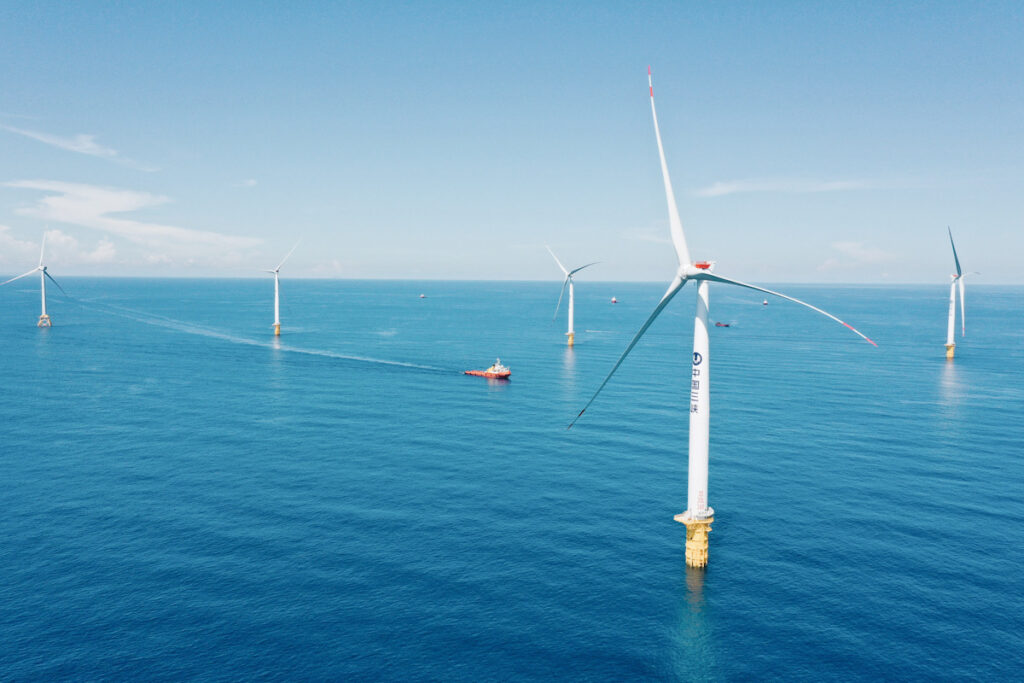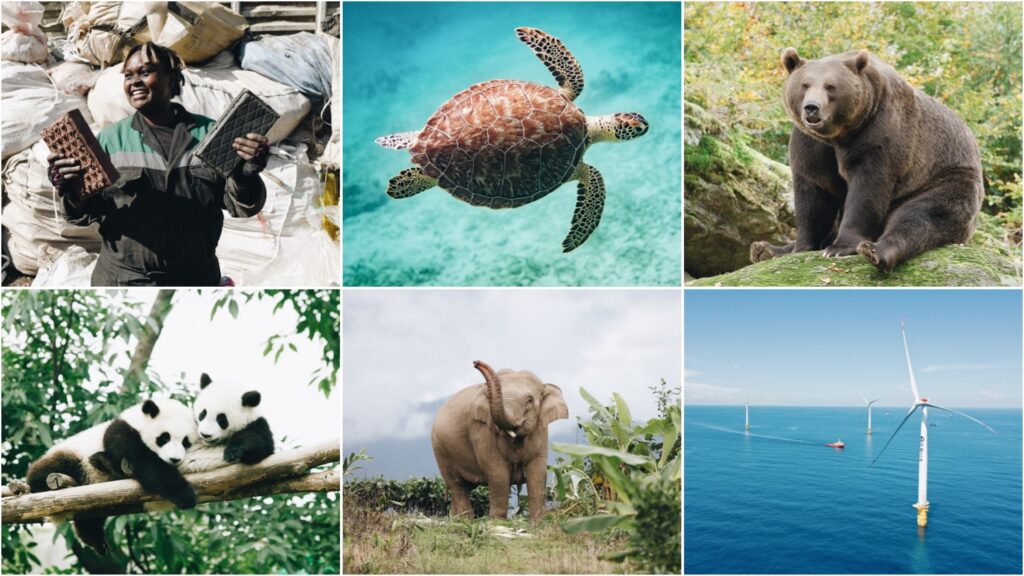This year has been another tough one, but a lot of positive stuff has happened in 2021, too, including some good climate news. From urban greening innovation and inner-city rewilding to additional breakthroughs in renewable energy, electric cars, and high-tech food, 2021 has shown that progress can be made, even if the going remains slower than we would like.
Despite falling biodiversity rates and continued environmental destruction, some parts of the world are actually showing signs of recovery (or at least the potential for future recovery), providing more than enough reason for cautious optimism as we move into 2022.
It’s also been a year of extensive rewilding efforts, wildlife conservation, urban greening, tree planting, and activism. Here are some of the other good climate news stories from 2021.
ICYMI: Good climate news of 2021

Rehabilitated sea turtles went home
In our first-ever good climate news feature, a turtle rehabilitation project rescued, supported, and re-released 30 Hawksbill, Green, and Loggerhead turtles on World Sea Turtle Day 2021. Also, biologists spotted an ultra-rare long-snouted seahorse (a Priority Species and “Feature of Conservation Importance”) off the UK coast, and researchers turned plastic waste into vanilla flavoring using genetically engineered microbes. Sustainable and delicious.

Restored antelope and carbon-eating graffiti
The last two years have seen Kazakhstan’s extremely rare saiga antelope population double in numbers thanks to extensive conservation efforts nationwide. Meanwhile, two British cities used striking murals to absorb carbon from the air, and Argentina’s Tierra del Fuego rejected the salmon farming industry in order to preserve its beautiful and biodiverse waters.

Pandas are no longer endangered!
The world’s favorite black and white bears are finally making a comeback, and earlier this year Chinese officials reclassified pandas as “vulnerable” rather than endangered. The UK welcomed the first baby beaver to be born on Exmoor in over 400 years (named Marcus Rashford by the British public), and in the U.S. the 10 year struggle to halt the Keystone XL pipeline ended in victory—a huge win for the environment, community members, and grassroots organizing.

Scientists could make it rain in Dubai
Weather modification turned another corner when scientists backed by the UAE showed that drones could help drop the soaring temperatures experienced in Dubai. Meanwhile, renewable energy provided the bulk of Britain’s power in 2020 due to increasing adoption and a decrease in overall demand. After several years of rehabilitation, Maruja the former circus monkey returned to the forest alongside the orphaned baby monkeys she helped to nurture.

China’s roaming elephants finally headed for home
After a year and a half of wandering, a herd of elephants from Yunnan’s Xishuangbanna National Nature Reserve finally returned back home, Canada announced a $25 million fund to protect its invaluable wetlands, and new evidence shows that England’s New Forest is definitely home to a well-established pine marten population after over 100 years of functional extinction.

Blue whales came back to Spain
This year also saw blue whales returning to Spain’s Atlantic coast decades after being hunted to near extinction, while Mallorca’s marine protected area has benefited the region’s wildlife, humans, and economy. At the 2021 IUCN General Assembly, Indigenous organizations were finally able to fully participate for the first time in 73 years, a welcome but long-overdue development.

Plastic pollution solutions and a platypus renaissance
A Kenyan company has been turning plastic waste into hard-wearing bricks, creating opportunities for young folks and recycling more than 20 tonnes of plastic in the process. In Australia, the Royal National Park began working towards the reintroduction of platypus, while a report by the Indigenous Environmental Network highlighted how Indigenous resistance has prevented at least 25 percent of North American emissions.

Fat bear week and the magic of kelp
One of the best things about September is Fat Bear Week, and 2021’s winner managed to show up late and still eat his way to victory. Meanwhile, a tech startup launched an underwater vessel that uses kelp to absorb carbon, and manta rays showed scientists a solution to plastic filtration.

Millions of acres of public land are protected (again)
California’s Highway 101 could finally get a much-needed wildlife crossing to help the mountain lions, bobcats, foxes, coyotes, and more that call the area home. Australia has managed to increase its bandicoot population tenfold, and President Joe Biden restored essential protections for three U.S. natural monuments totaling millions of acres of public land.

Harvesting wind… In the ocean?
In order to reach its goal of 30 gigawatts of offshore energy by 2030, the Biden-Harris administration could build enormous wind farms on both coasts of the U.S. Community conservation groups in Mombasa, Kenya, are working to restore important mangrove trees, and four of the world’s most-threatened tuna species are finally (slowly) recovering.

Monarch butterflies are rebounding in California
Monarch butterflies are rebounding in coastal California, Conservationists released approximately 3,000 baby river turtles into a river in the Peruvian Amazon, and the U.S. government could officially label the grey wolf “endangered” again. (That’s a good thing!)

The Thames is alive!
This year saw the most comprehensive assessment of England’s River Thames in well over half a century, which concluded that the waterway is much healthier than it was in the 1960s. Today it’s home to eels, seahorses, seals, and three different species of shark. In the U.S., Apple finally launched a self-repair service (a huge win for sustainability), and California vineyards swapped toxic pesticides for owls.

Rescue dogs become conservationists
Washington’s Rogue Detection Teams exclusively rescues dogs from shelters and trains them to track wildlife, aiding scientific and conservation efforts around the world. New York City now has potential plans to green the notorious Cross Bronx Expressway, while the Welsh government promised to give every household in the country its own tree to plant.


